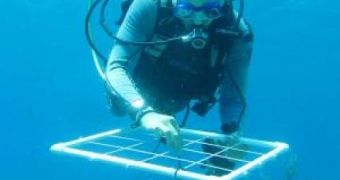Marine biologists have been arguing for a long time that agricultural nutrient runoffs play a very important role in making corals around the world sick, and more likely to exhibit a process called bleaching. The conclusions of the longest study ever conducted on this issue now support this claim.
Nutrient runoffs can make their way into the ocean from a variety of sources, such as chemical used for agriculture that make their way into rivers, or from sewage that is left partially untreated, among other sources. Regardless of how they make their way into the waters, their effects are the same.
In the 3-year experiment, researchers exposed a batch of corals off Florida Keys to elevated levels of runoff from various sources. The tests, which took place between 2009 and 2012, determined that coral disease doubled in incidence over the study area, and that instances of coral bleaching tripled.
Bleaching is a phenomenon where reefs start turning white, as the corals that occupy them die off or migrate to other areas. This is widely considered to be one of the earliest tell-tale signs that something is wrong with a particular reef, or section of a reef, Science Daily reports.
The research also features a silver lining of sorts. The research group, from the Oregon State University College of Science, determined that corals were able to recover relatively fast, once the offending agents were removed from the environment. This implies that it may not be too late for global coral conservation efforts.
“We were shocked to see the rapid increase in disease and bleaching from a level of pollution that's fairly common in areas affected by sewage discharge, or fertilizers from agricultural or urban use,” explains OSU assistant professor Rebecca Vega-Thurber
“But what was even more surprising is that corals were able to make a strong recovery within 10 months after the nutrient enrichment was stopped. The problems disappeared,” the researcher adds.
Details of the study, its methods and its conclusions were published in the latest issue of the journal Global Change Biology. The silver lining it provides may be used as a starting point for conserving corals. More than 80 species have disappeared from the Caribbean Sea over the past decades alone.
The investigation “provides real evidence that not only can nutrient overload cause coral problems, but programs to reduce or eliminate this pollution should help restore coral health. This is actually very good news,” Vega-Thurber concludes.

 14 DAY TRIAL //
14 DAY TRIAL //